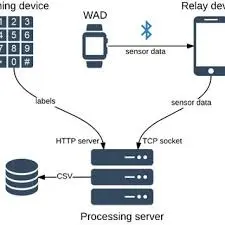Introduction: The Architecture Behind Digital Collaboration
In an age where data flows at the speed of thought, the client-server network model remains the unsung framework empowering everything from global banking systems to streaming platforms. While newer architectures like peer-to-peer (P2P) and edge computing grab headlines, the client-server paradigm continues to dominate enterprise IT, driven by its unmatched balance of control, security, and scalability. This article explores why businesses across industries still rely on this decades-old model, how it adapts to evolving technological demands, and the tangible benefits that make it indispensable in a hyperconnected world.
Anatomy of a Client-Server Network
At its core, a client-server network divides responsibilities between two entities:
- Clients: End-user devices (laptops, smartphones, IoT sensors) that request services or data.
- Servers: Centralized machines (physical or virtual) that process requests, manage resources, and enforce policies.
Unlike decentralized models, this structure establishes clear hierarchy. Consider a hospital’s electronic health record (EHR) system:
- Client Action: A doctor’s tablet requests a patient’s MRI scan.
- Server Response: The central server authenticates the request, retrieves the 2 GB DICOM file from storage, and delivers it via encrypted channels.
- Audit Trail: The server logs the access for compliance reporting.
This division of labor enables precise control, but the true value lies in its ripple effects across operations.

Five Strategic Benefits of Client-Server Models
1. Centralized Security and Compliance
- All data resides on servers, enabling uniform encryption, access controls, and backups. For example, JPMorgan Chase’s trading platforms use client-server architectures to enforce FINRA compliance, with server-side tools blocking unauthorized trades in real time.
- PCI DSS audits become simpler when cardholder data isn’t fragmented across endpoints.
2. Scalability Without Complexity
- Adding clients (e.g., new POS terminals in a retail chain) doesn’t require reconfiguring the entire network. Netflix’s OpenConnect servers, for instance, scaled to support 247 million subscribers by upgrading server capacity independently of client devices.
- Cloud integration allows “server bursting” during demand spikes (e.g., Amazon Prime Day sales).
3. Optimized Resource Utilization
- Servers handle heavy computations, freeing clients from needing high-end hardware. AutoCAD’s cloud rendering farms let architects collaborate on 3D models using basic tablets.
- Energy consumption drops by 20-40% compared to P2P models, as idle clients don’t act as servers.
4. Streamlined Maintenance and Updates
- Software patches deploy once on the server, propagating instantly to all clients. Microsoft Azure reports a 70% reduction in vulnerability exposure since shifting to this model for Office 365 updates.
- IT teams monitor performance centrally via tools like Nagios or SolarWinds, slashing troubleshooting time.
5. Enhanced Collaboration
- Real-time document editing in Google Workspace exemplifies client-server synergy: clients input changes, servers synchronize versions globally.
- Multiplayer games like Fortnite rely on authoritative servers to ensure fair play, processing 5 million+ concurrent user actions without desynchronization.
Client-Server in Action: Industry Transformations
Healthcare:
- Mayo Clinic’s client-server system processes 7 PB of patient data daily. Radiologists access AI-enhanced imaging tools hosted on centralized GPUs, reducing diagnosis times by 30%.
Retail:
- Walmart’s inventory servers sync with 10,500 stores worldwide. When a Seattle store sells a product, the server updates stock levels, triggering automatic reorders and price adjustments.
Finance:
- Visa’s servers authorize 65,000 transactions per second during peak hours. Fraud detection algorithms analyze spending patterns server-side, blocking suspicious activity before clients (e.g., mobile banking apps) notify users.
Challenges and Modern Adaptations
No architecture is flawless. Client-server models face pressures including:
- Latency: Edge computing integrations (e.g., AWS Local Zones) now cache critical data closer to clients, slashing response times for IoT devices.
- Single Points of Failure: Hybrid cloud setups and Kubernetes clusters distribute server loads across regions. Disney+ survived 12 million+ launch-day users by balancing server farms globally.
- Cost: Subscription-based “serverless” models (AWS Lambda, Azure Functions) let businesses pay per execution, democratizing access for startups.

Leave a comment